Exploratory weaving sampler
2019.01.23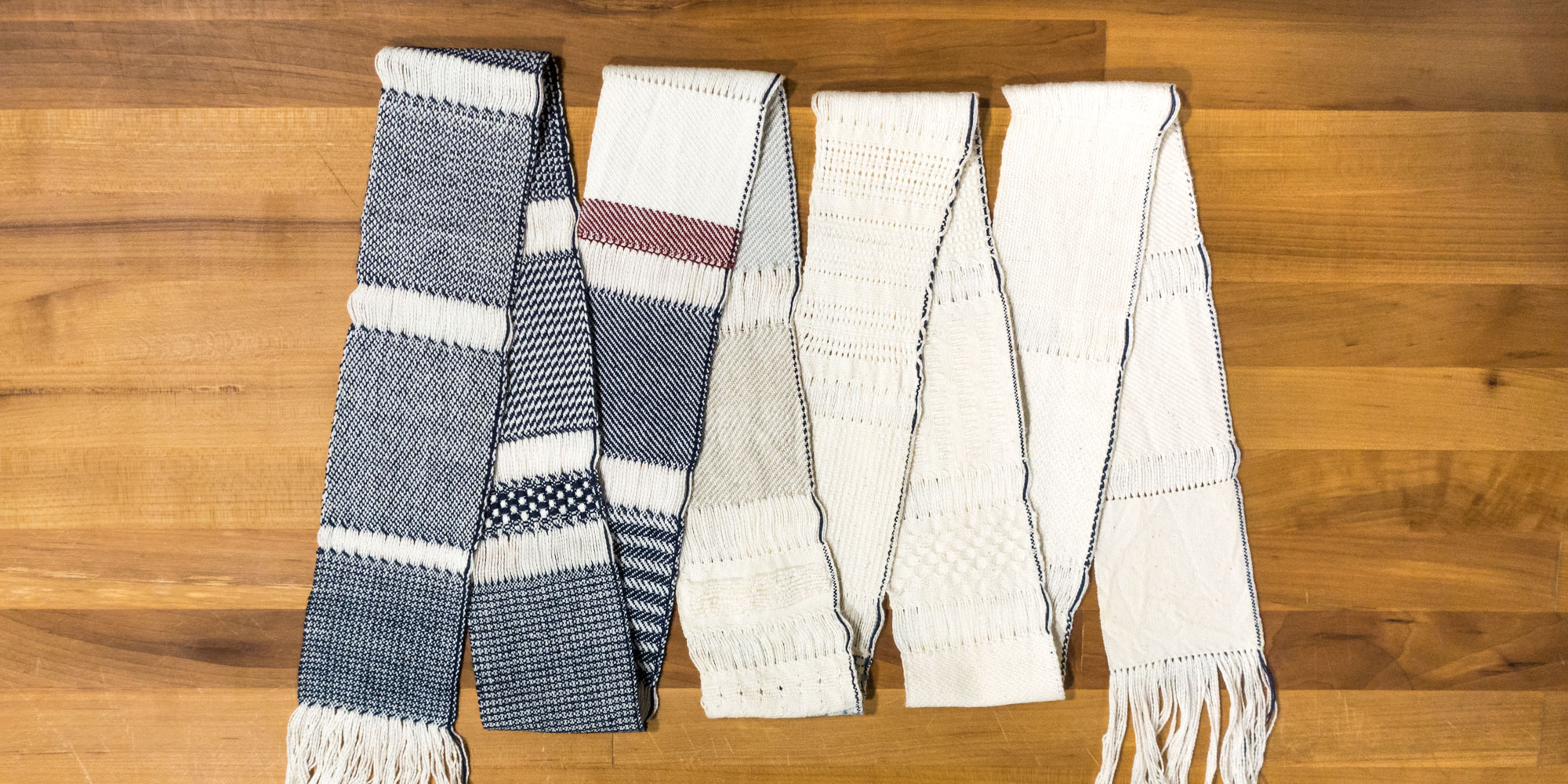
In April 2018, I completed a 10-foot-long sampler containing 25 separate panels. Here is the long overdue writeup.
Background
In the past, I’ve used samplers to experiment with a particular warp and prepare for weaving a final project. However, for this project I decided to make the sampler my end goal. I wanted to accelerate my understanding of the impact of fiber and weave structure on the texture, feel, and drape of the final cloth. My completed project contained 25 different panels woven on a 4” wide warp.
Project setup
Loom configuration
| warp material | 8/2 unmercerized cotton (American Maid yarn from Lunatic Fringe) |
| warp spacing | 24 epi |
| warp width | 4” (96 warp threads) |
| warp length | 4 yards (10 feet after weaving, cutting it off the loom, and washing) |
| shaft threading | straight draw (warp threads are threaded through the loom’s 4 shafts in linear order: 1-2-3-4-1-2-3-4 etc) |
| reed | 12 dent reed |
| reed threading | 2 warp threads per dent, except for the selvedges which get 3 |
Weaving patterns
I wove a variety of different patterns using just the treadles:
- plain weave
- 2x2 twill
- 1x3 twill
- waffle weave
- canvas
- half basket weave
- damask (alternating weft-wise rows of 1x3 and 3x1 twill)
- other patterns that I don’t have a name for
With a pickup stick (and other tools such as a crochet hook or knitting needle), I was able to weave more elaborate patterns:
- weft-pile/looped-pile (think: washcloth, with consistent-sized loops formed by wrapping the weft thread around a knitting needle, and loops held in place by several rows of plain weave)
- Danish medallions
- leno lace (with an attempt at implementing doup leno, using doups made of scraps of 8/2 tencel)
- Spanish lace
- honeycomb
In all samplers, I attempted to weave square, using 24 ppi (picks per inch) to match the 24 epi of the warp.
Weft material
I used a variety of different weft fibers, all of which were approximately the same diameter as my warp material. I repeated some weaving patterns using a variety of fiber types.
- 8/2 unmercerized cotton (made by Valley Yarns and American Maid)
- 8/2 acrylic (Maurice Brassard)
- 8/2 cottolin (60% cotton, 40% linen, made by Maurice Brassard)
- 2-ply hemp yarn (Lunatic Fringe)
- 8/2 tencel (Maurice Brassard)
Sampler exceprts
Plain weave
For the plain weave section, I chose to use the same weft material as the warp. My goal was to weave square (24 epi and 24 ppi, or equal numbers of warp and weft threads per 1” square section). I concluded that although it was possible to beat the weft hard enough to achieve this, doing so would be more difficult for wider warps.
The finished sample is quite thick and wrinkles very easily. For most applications, I believe that 24 epi/ppi is too dense when weaving with this particular 8/2 cotton.
Twill
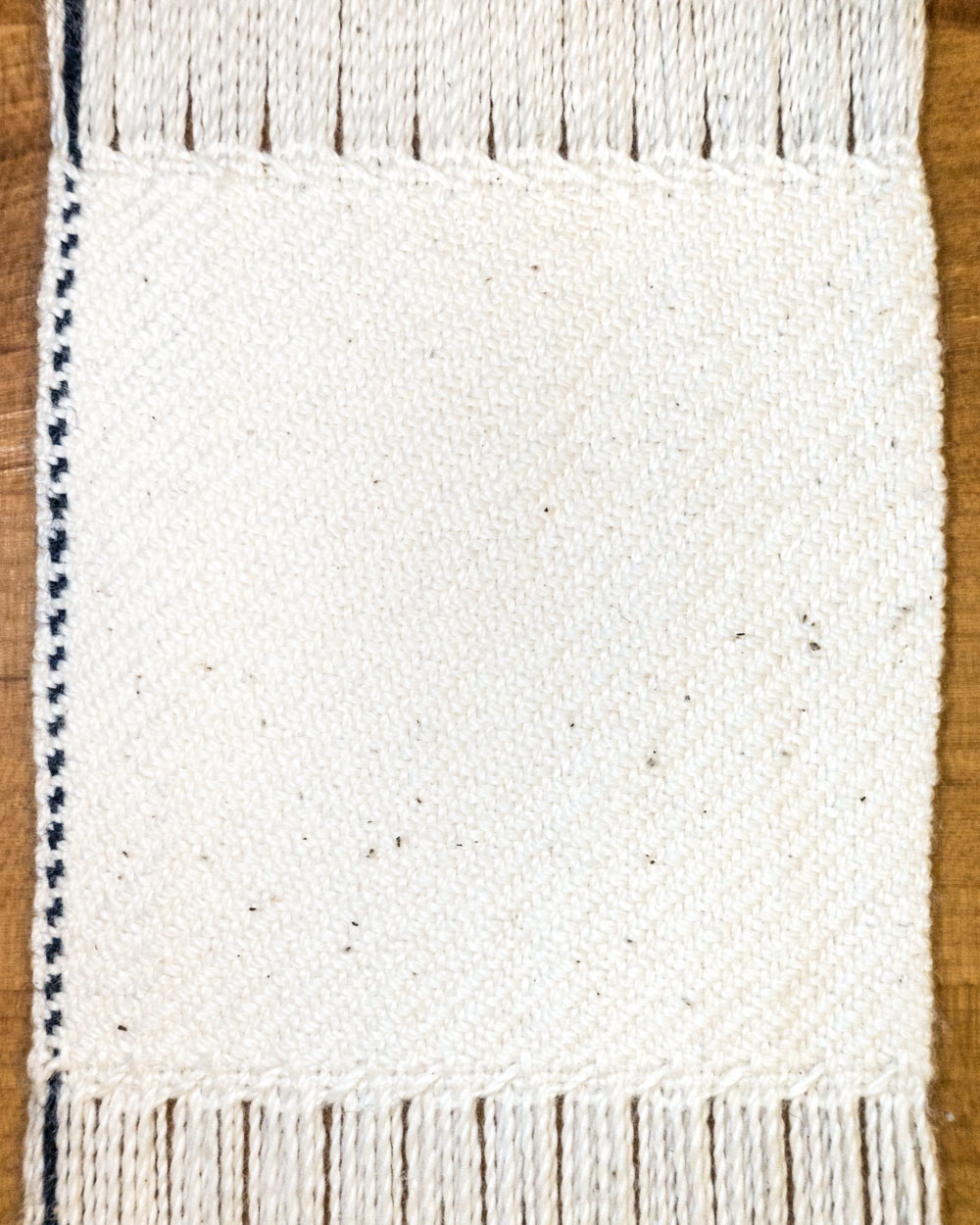
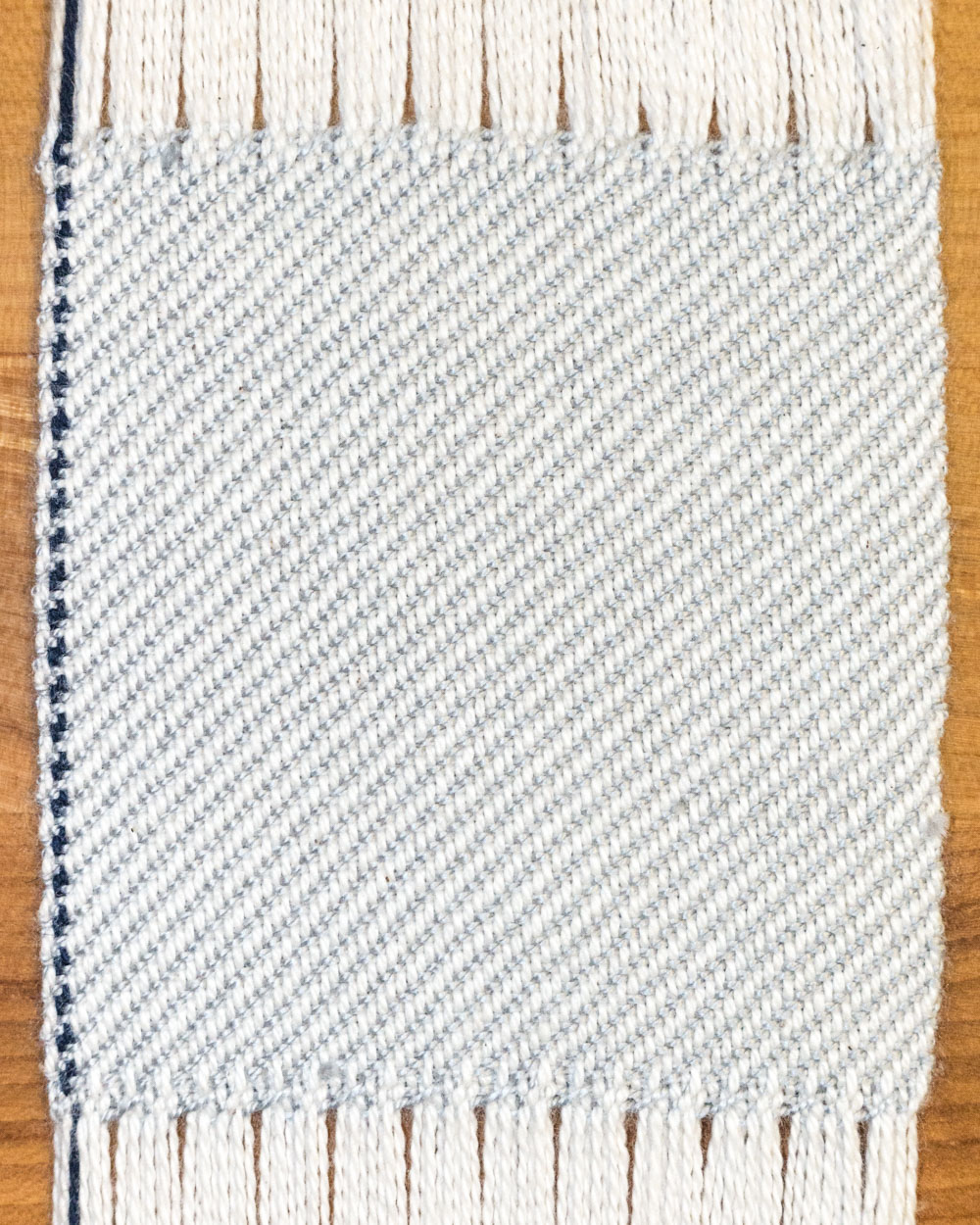
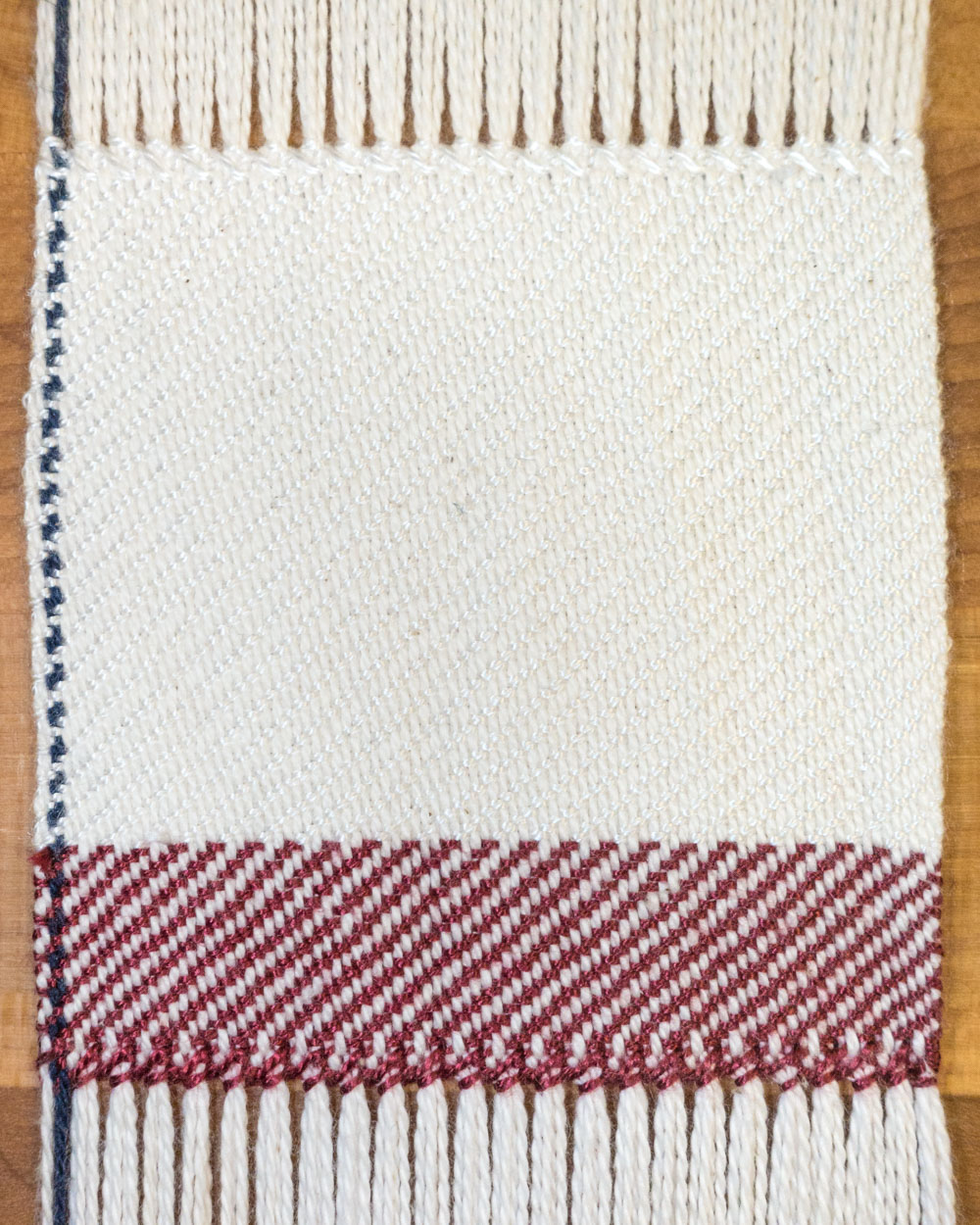
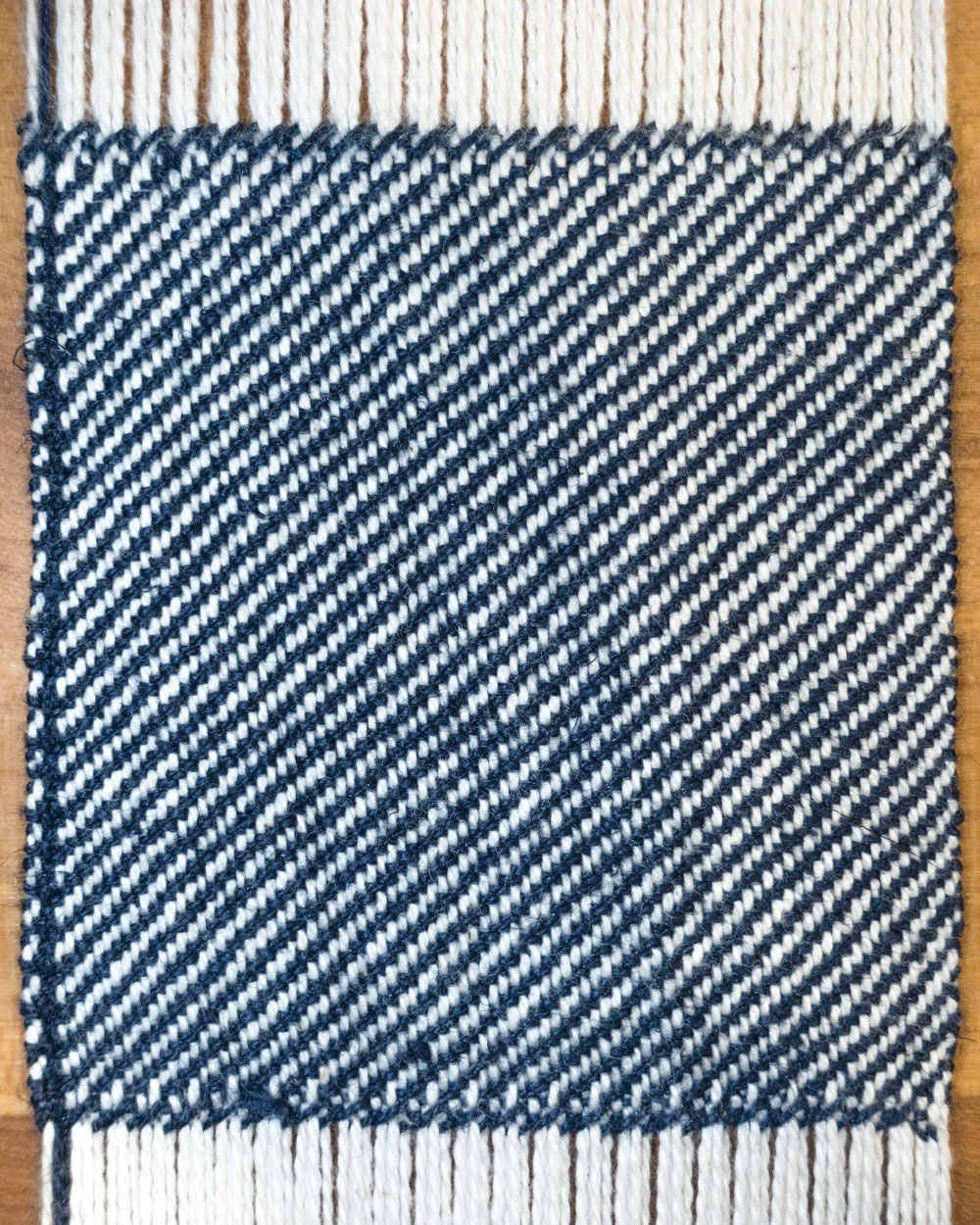
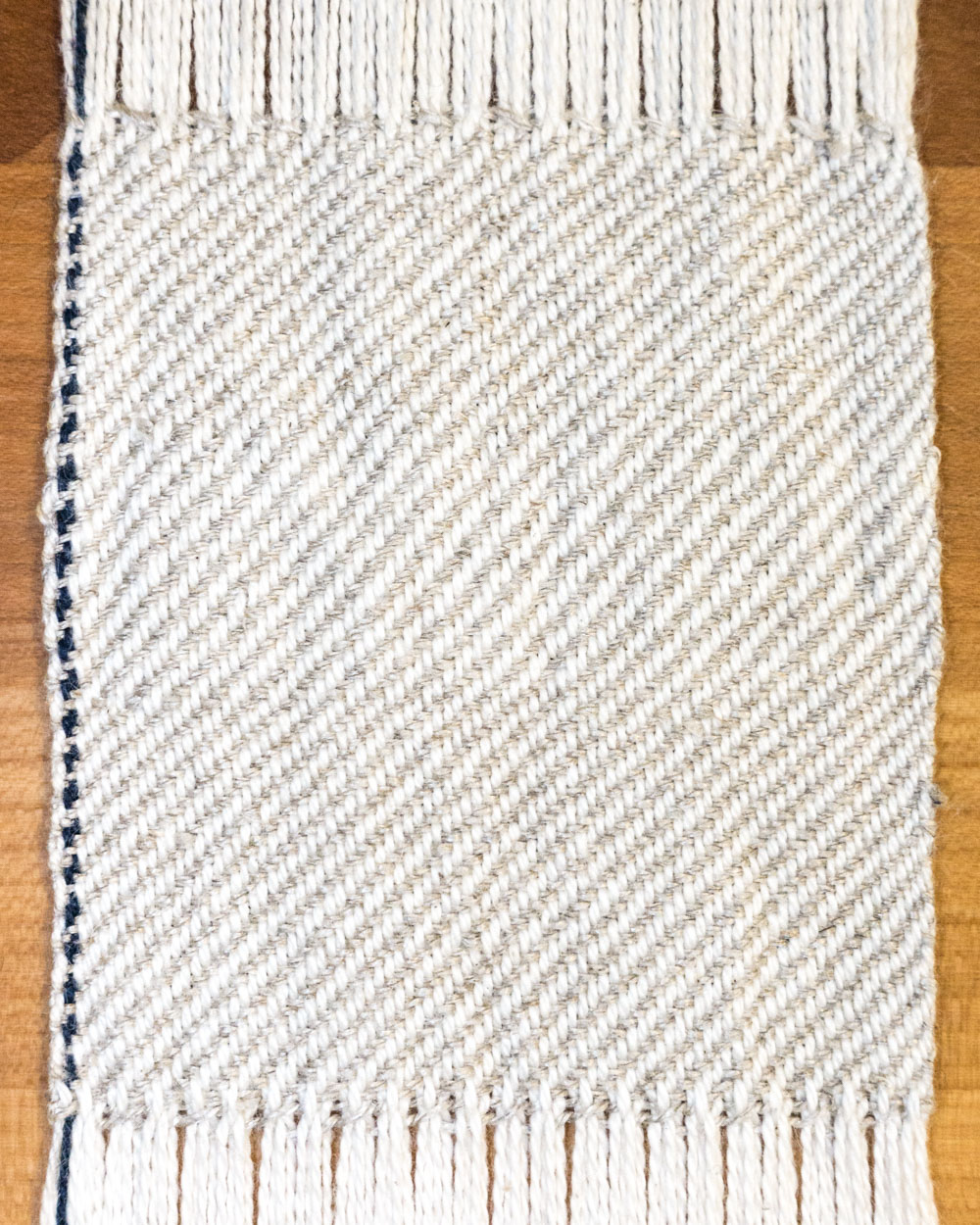
I wove five sections of 2x2 twill using different weft fibers: unmercerized cotton, acryllic, tencel, cottolin, and hemp.
Out of all the weft yarns I tried, tencel produced a sampler with the most drape. This is most likely because the tencel yarn is the smoothest of the five, and therefore slides most readily against the comparatively hairy cotton warp. In contrast, hemp produced the stiffest fabric.
My particular hemp yarn (2-ply hemp from Lunatic Fringe Yarns) was quite stiff and had a tendency to grab onto the warp threads as I beat it into place; I had difficulty packing the weft threads as densely as I wanted. The hemp section remained stiff even after hand washing, despite my attempts to soften the fibers by working the cloth.
Damask
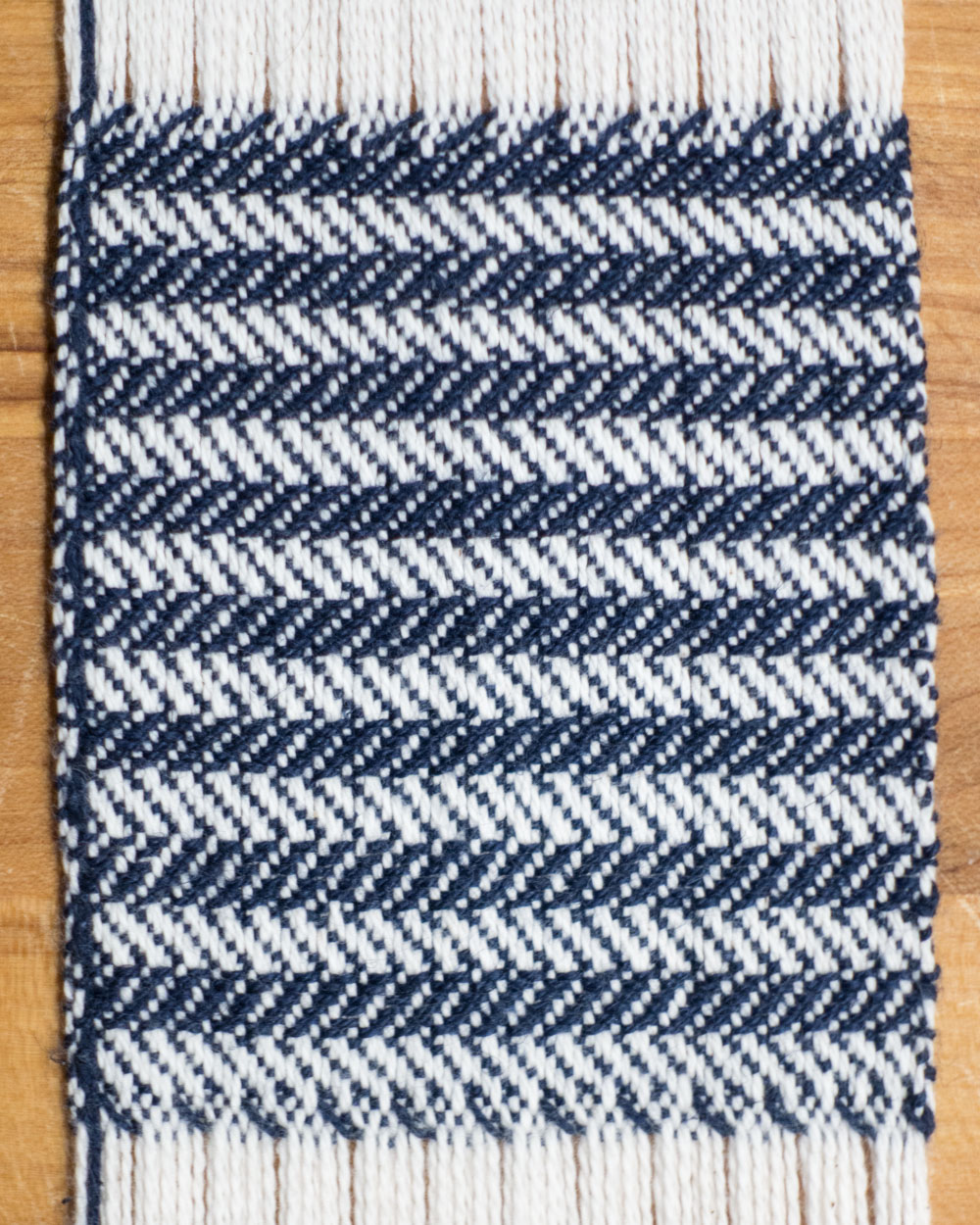
With my 4-shaft loom and straight draw threading pattern, I was limited to creating alternating width-wise stripes of 1x3 and 3x1 twill. The light stripes are weft-dominant, and the dark stripes are warp-dominant. Traditional damask creates visual patterns (often a non-geometric floral pattern) using warp-dominant sections on a weft-dominant background (or vice-versa).
In my sample, I found that the weft-facing sections felt raised relative to the warp-facing sections. However, I am unsure whether this is due to uneven weaving tension (especially between the top and bottom warp threads of an open shed) or the fact that the cottolin weft threads are stiffer than the unmercerized cotton warp. If my weaving was perfectly calibrated and the warp and weft yarns were identical, I would expect the sample to feel flat.
Long weft floats
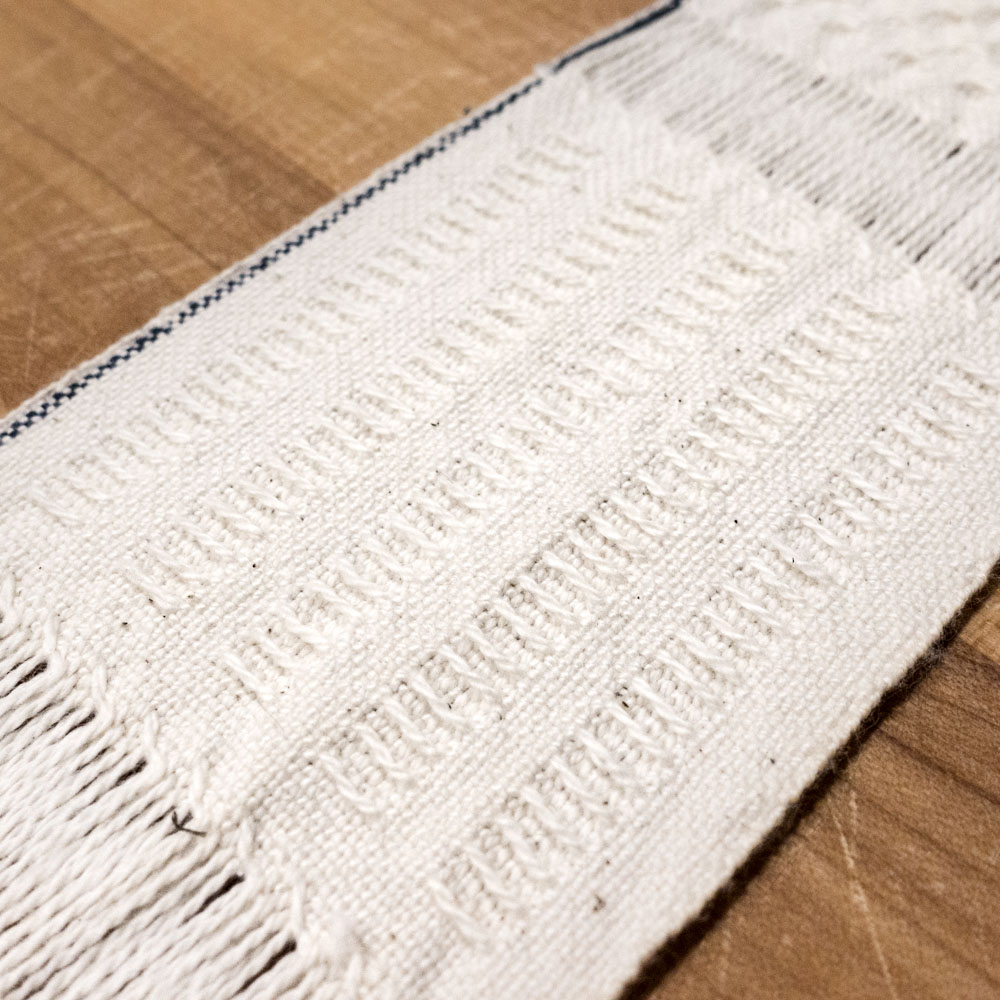
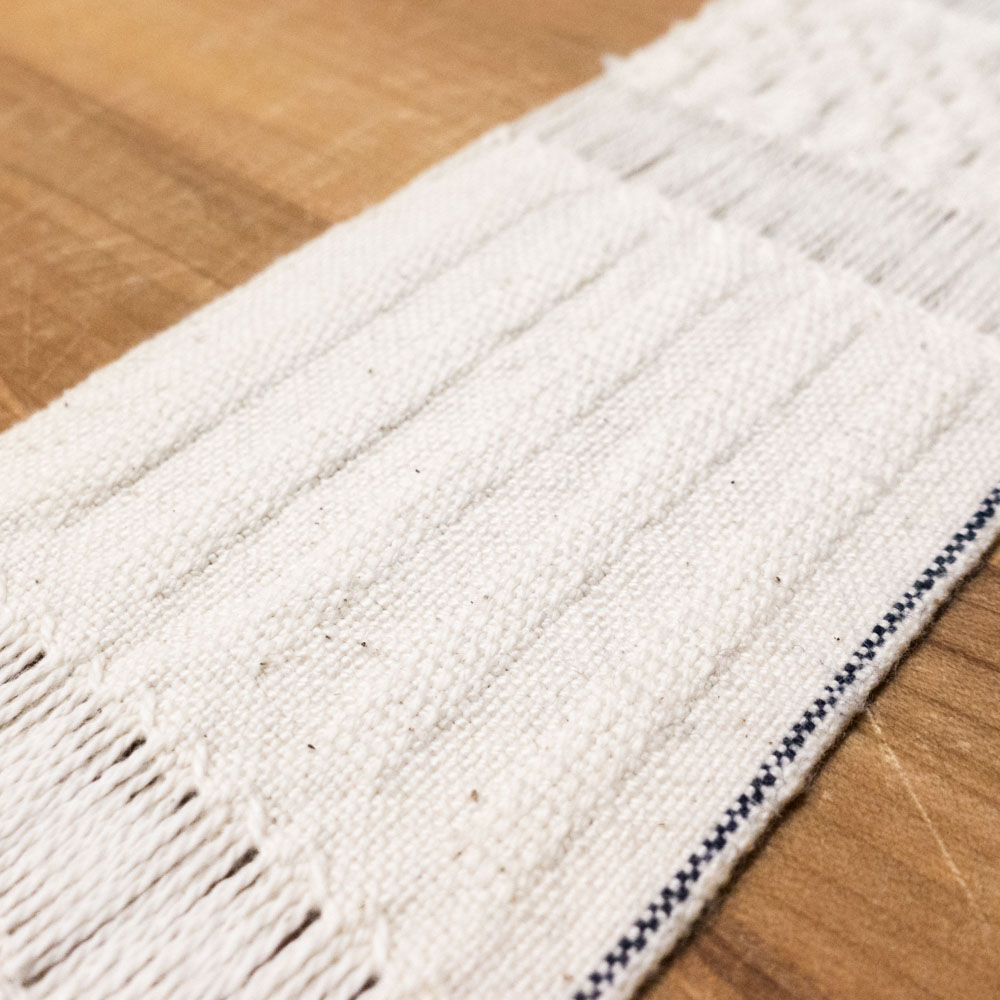
Using a pickup stick, I created columns of weft floats on a plain weave background. Before washing, the pattern was only obvious from the front (showing the horizonal floats). However, after washing, the fabric puckered slightly; the columns as viewed on the back of the sampler are raised relative to the plain weave background. This is most likely due to the floats on the front drawing in the edges of each stripe, even though the floats do not feel like they’re under tension.
In a future exploratory project, I could weave the same panel again, then cut each float so the surface is covered in short loose threads that are anchored in the plain weave fabric. This would help determine whether the textural changes on the back of the fabric are due to the different weave structure in the columns or due to forces exerted by the floats.
Closing thoughts
The inspiration for this project came from reading Laura Fry’s blog posts about her involvement in the Olds College Master Weaver Program, particularly this guest post by Toby Smith. I adapted several of the pick-up stick patterns from Inventive Weaving on a Little Loom by Syne Mitchell.
I would like to repeat this experiment using different warp fibers and a different warp thread density. I would also consider making the next project significantly wider than 4”.
No amount of practice can take the place of weaving a sampler on the actual project warp. However, having completed this project, I now know a lot more about the relative drape of different fibers and weave structures, and I have experience creating new patterns with a pickup stick.